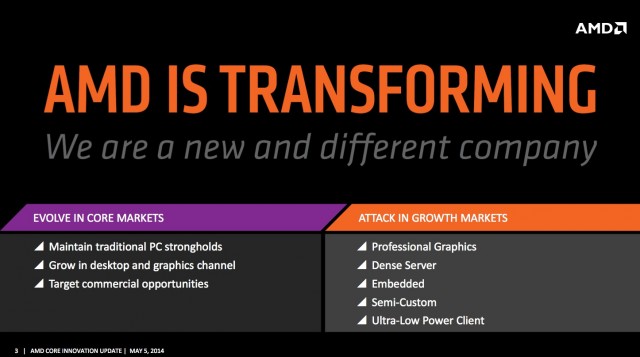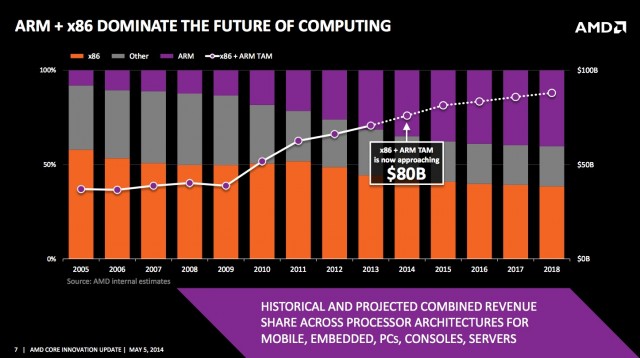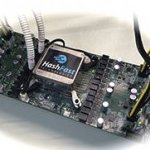
Back in October of 2012, AMD announced its very first ARM processors, the initial step away from the x86 CPU instruction set the company has relied on since the early '80s. However, those chips (64-bit eight- and 16-core SoCs based on ARM's Cortex A57 architecture) are destined for servers, not for consumer products like tablets, laptops, or phones. Today the company gave us more details about its plans for 2015 and 2016. According to those roadmaps, AMD has ambitions for ARM that extend beyond the server room.
This year, AMD's x86 and ARM offerings are mostly separate. The x86-based "Kaveri" architecture covers the consumer desktop segment, while the brand-new "Beema" and "Mullins" x86 chips (evaluated here by AnandTech) cover low-end laptops and tablets. "Seattle," the company's only ARM design, is confined to servers and is slated to launch later this year. In 2015 and into 2016, AMD will begin to develop and release consumer-oriented ARM chips alongside its current x86 offerings. 2015's "Project Skybridge" will combine both x86 and ARM CPU cores with a few common features—a unified memory pool for the CPU and GPU, GPUs based on the Graphics Core Next (GCN) architecture, and a 20nm manufacturing process.
The x86 and ARM chips will be pin-compatible, meaning that designers could swap an ARM chip for an x86 one without changing anything else about the design. In theory, an OEM could build a full x86 Windows 8.1 tablet, swap the chips, and release an ARM-based Android tablet while keeping the rest of the design the same. In addition to being AMD's first ARM chips for consumers, Project Skybridge will be AMD's first platform to feature Android compatibility.

In 2016, the company will release its first custom ARMv8 architecture. Dubbed "K12," the 64-bit chip will be developed alongside new 64-bit x86 architectures and will replace the ARM-designed Cortex A57 architecture used in both the Seattle server chips and in the Project Skybridge parts. AMD's slides indicate that K12 and Project Skybridge will both be targeted toward "Ultra-Low Power Client" systems rather than high-performance desktops or laptops. For now, we can assume that those systems will continue to be served by higher-end, higher-power x86 chips. The roadmap also shows that both K12 and Skybridge will replace the Seattle chips in high-density servers and embedded systems.

Since Rory Read became AMD's CEO back in 2011, his strategy has been to reduce AMD's reliance on the x86 desktop and laptop CPUs that most people associate with the company. Those chips were impressive back in the early 2000s while Intel struggled with the Pentium 4, but their performance and power consumption haven't been competitive with Intel's best products in years. This is especially true in low-power devices like laptops and tablets. Read wanted the company to be earning at least 20 percent of its revenue from embedded and "semi-custom" chips by the end of 2013, a goal the company met thanks in large part to the AMD chips in the PlayStation 4 and Xbox One. The company lost just $20 million last quarter and turned a profit at the end of 2013 on the strength of its game console business; expanding AMD's push into ARM chips is a continuation of that strategy.

AMD's slides indicate that the total addressable size of the x86 and ARM market combined "is now approaching $80 billion," and the company is attempting to position itself to grab as big a slice of that pie as possible. It hasn't had much luck getting its low-power x86 chips into tablets, but low-power ARM chips and Android compatibility could begin to turn that around over the next couple of years.






Promoted Comments
You must login or create an account to comment.